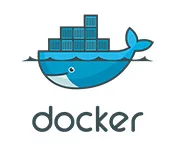I have a React app with a Node.js backend, and I am attempting to host it using Kubernetes. The backend server launches successfully and is reachable. However, the frontend doesn’t appear after deploying my containers. I think it has something to do with the ports. But i am not sure since I am very new to Docker und Kubernetes
Frontend DockerFile:
FROM node:14.14.0-alpine as builder
WORKDIR /app
COPY ./package.json ./
RUN npm i
COPY . .
RUN npm run build
FROM nginx
COPY ./nginx/default.conf /etc/nginx/conf.d/default.conf
COPY --from=builder /app/build /usr/share/nginx/html
COPY sw_PublicKey.crt /etc/ssl/sw_certificatePKCS7.crt
COPY private_key.pem /etc/ssl/private_key.pem
EXPOSE 443
Backend DockerFile
FROM node:14.14.0-alpine
WORKDIR /app
COPY ./package.json ./
RUN npm i
COPY . .
EXPOSE 4000
CMD ["npm", "run", "start"]
enter code here
NGINX CONFIG
server{
listen 443 ssl;
#listen 10.10.100.66:3000;
#Type your domain name below
server_name spesen.sxdes.de;
ssl_certificate /etc/ssl/sw_certificatePKCS7.crt;
ssl_certificate_key /etc/ssl/private_key.pem;
ssl_session_timeout 1d;
ssl_session_cache shared:SSL:50m;
ssl_session_tickets off;
ssl_protocols TLSv1.2;
# Only use ciphersuites that are considered modern and secure by Mozilla
ssl_ciphers 'ECDHE-ECDSA...';
ssl_prefer_server_ciphers on;
location / {
root /usr/share/nginx/html;
index index.html index.htm;
try_files $uri $uri/ /index.html;
}
}
NGINX Default.conf
upstream client {
server client:3000;
}
upstream api {
server api:4000;
}
server {
listen 443;
location / {
proxy_pass http://client;
}
location /sockjs-node {
proxy_pass http://client;
proxy_http_version 1.1;
proxy_set_header Upgrade $http_upgrade;
proxy_set_header Connection "Upgrade";
}
location /api {
rewrite /api/(.*) /$1 break;
proxy_pass http://api;
}
}
client-cluster-ip-service
apiVersion: v1
kind: Service
metadata:
name: client-cluster-ip-service
spec:
type: ClusterIP
selector:
component: web
ports:
- port: 3000
targetPort: 3000
client_deployment
apiVersion: apps/v1
kind: Deployment
metadata:
name: client-deployment
spec:
replicas: 1
selector:
matchLabels:
component: web
template:
metadata:
labels:
component: web
spec:
containers:
- name: client
image: ss/spesen-c:latest
ports:
- containerPort: 3000
env:
- name: REACT_APP_GOOGLE_MAPS_API_KEY
value: "..."
imagePullSecrets:
- name: secret/...
ingress-service
apiVersion: networking.k8s.io/v1
kind: Ingress
metadata:
name: ingress-service
annotations:
kubernetes.io/ingress.class: "nginx"
nginx.ingress.kubernetes.io/use-regex: "true"
nginx.ingress.kubernetes.io/rewrite-target: /$1
spec:
rules:
- http:
paths:
- path: /?(.*)
pathType: Prefix
backend:
service:
name: client-cluster-ip-service
port:
number: 3000
- path: /api/?(.*)
pathType: Prefix
backend:
service:
name: server-cluster-ip-service
port:
number: 4000
server_cluster_ip_service
apiVersion: v1
kind: Service
metadata:
name: server-cluster-ip-service
spec:
type: ClusterIP
selector:
component: web
ports:
- port: 4000
targetPort: 4000
server-deployment
apiVersion: apps/v1
kind: Deployment
metadata:
name: server-deployment
spec:
replicas: 1
selector:
matchLabels:
component: web
template:
metadata:
labels:
component: web
spec:
containers:
- name: server
image: schorerwolfae/spesen-server
ports:
- containerPort: 4000
env:
- name: ACCESS_TOKEN_SECRET
value: "..."
- name: REFRESH_TOKEN_SECRET
value: "..."
- name: DATABASE_URI
value: "..."
- name: AD_PASSWORD
value: "..."
imagePullSecrets:
- name: secret/...

 Question posted in
Question posted in 

2
Answers
You need to either pass TLS through to the backend or tell nginx to talk https to the backend.
Annotations:
passthrough:
nginx.ingress.kubernetes.io/ssl-passthrough: "true"TLS backend (reencrypt):
nginx.ingress.kubernetes.io/backend-protocol: "HTTPS"ornginx.org/ssl-services: "name-of-service"See https://github.com/nginxinc/kubernetes-ingress/tree/v1.12.0/examples/ssl-services
Your frontend docker file is exposing port 443, while the nginx configuration is being proxied to port 3000. You may want to change the frontend container/docker to expose port 3000 and let the nginx ingress handle the certificate for your deployment. See this article for reference.